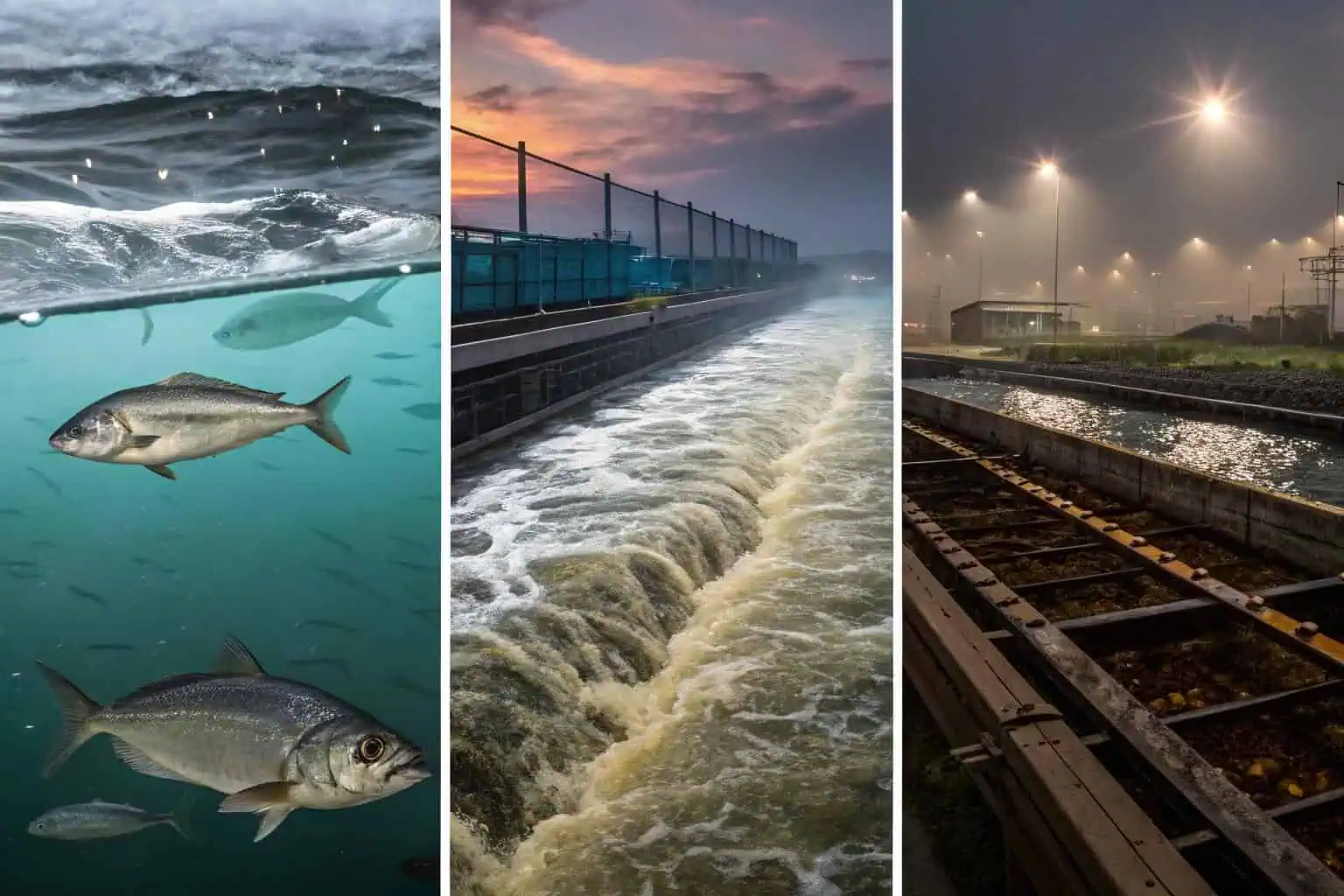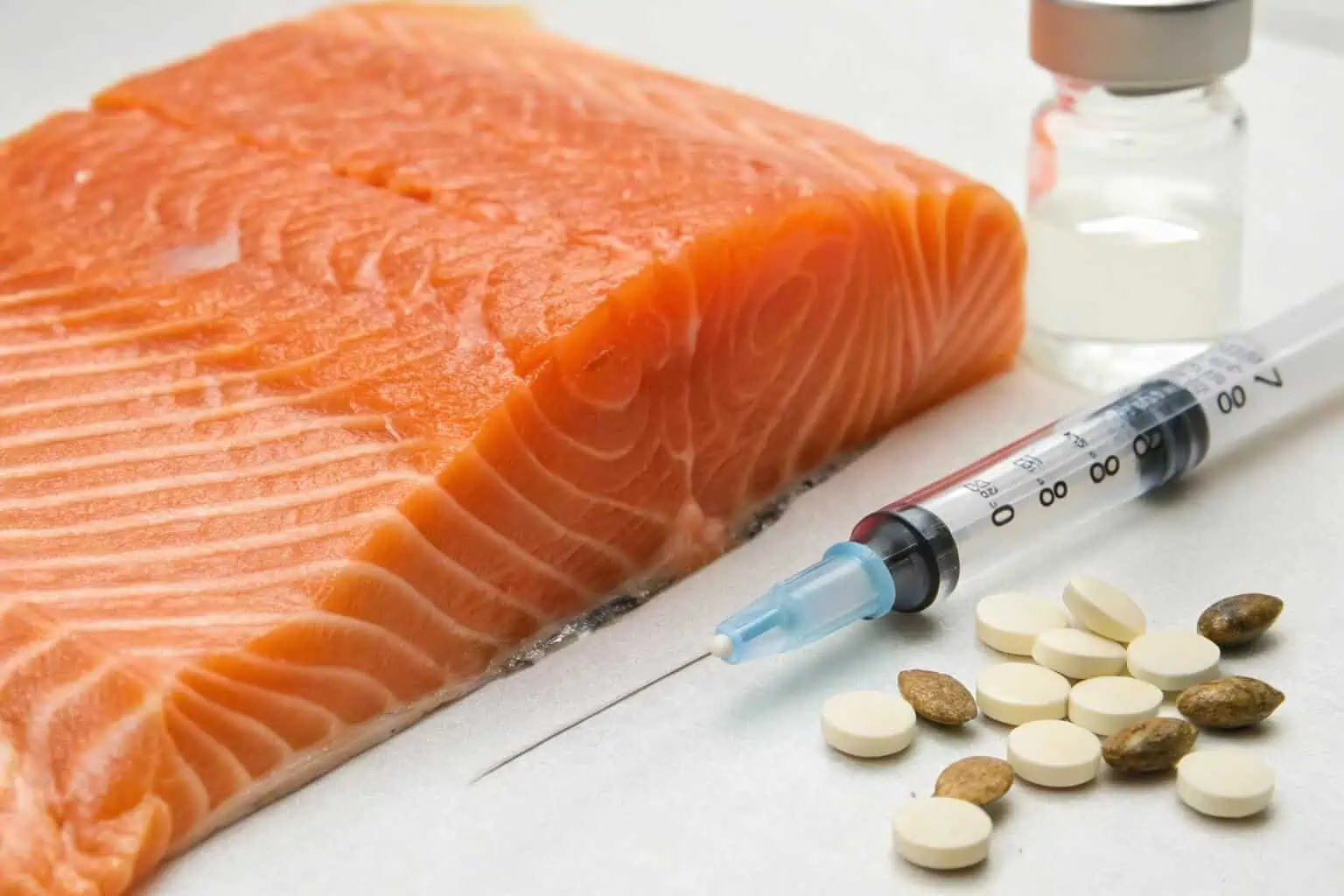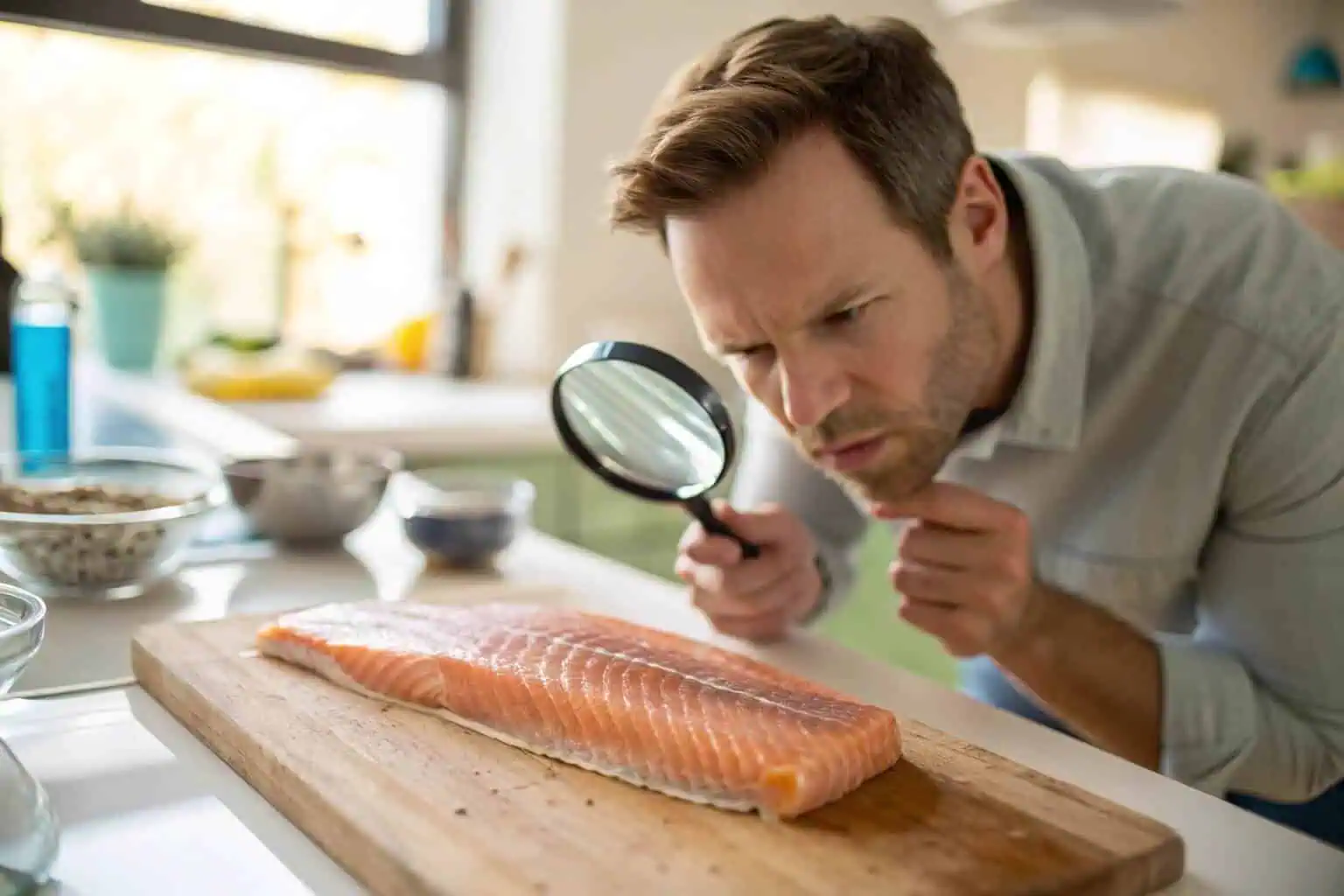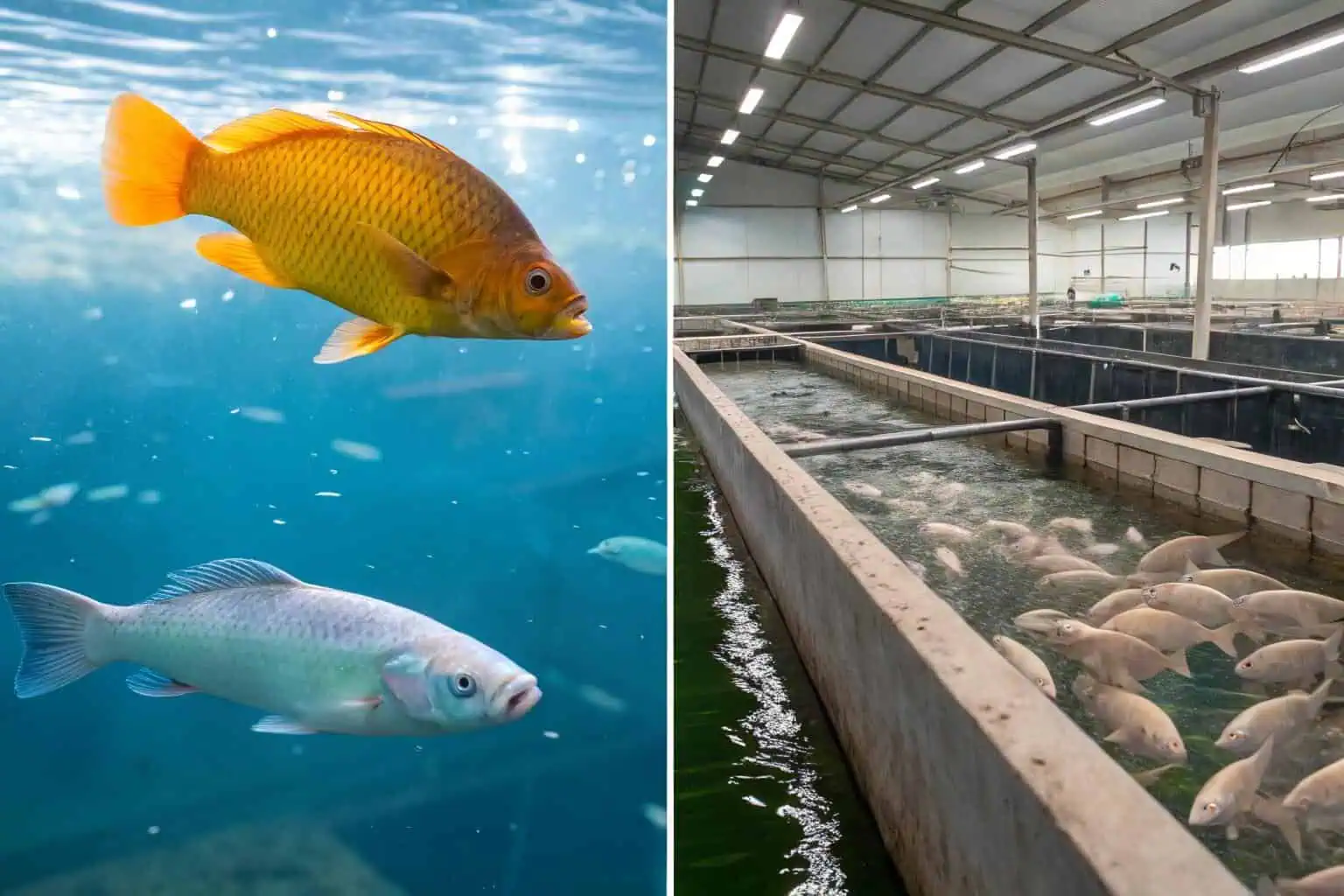What are the dangers of fish farming?
Worried about where your fish comes from? Farmed fish can hide serious risks. Discover the hidden dangers and how to choose safer options for your health and the planet.
Fish farming, or aquaculture, poses significant dangers, including environmental pollution from waste and chemicals, health risks from antibiotic and heavy metal residues in fish, and the spread of diseases due to high-density farming conditions, which can impact both wild populations and consumers.

While fish farming provides a significant portion of the world's seafood, it's a double-edged sword. I've spent years looking into our food systems, and what I've found about aquaculture is concerning. It's a complex industry with practices that can directly affect our environment and our health. Let's peel back the layers and look at what's really going on beneath the surface, so you can make more informed choices the next time you're at the fish counter.
What are the negative effects of fish farming?
Think fish farms are a clean solution to overfishing? The reality is that their runoff and waste can create massive pollution. Let's explore the environmental toll of modern aquaculture.
The primary negative effects of fish farming are environmental. These include water pollution from fish waste and uneaten feed, the spread of diseases and parasites to wild fish populations, and the ecological damage caused by the construction and operation of fish farms in sensitive coastal areas.

When I first started looking into fish farming, I was shocked by the environmental impact. It's not just about what's in the fish, but what the farms release into the surrounding ecosystem. The consequences are far-reaching and can be devastating. I've seen firsthand how a pristine coastline can be altered by the introduction of large-scale aquaculture. The problem is multifaceted, stemming from the very design of many conventional fish farms.
Water Pollution
Imagine thousands of fish confined to a small area, like an aquatic factory farm. Their concentrated waste, full of nitrogen and phosphorus, along with uneaten feed, sinks to the seabed. This creates a thick, oxygen-depleted sludge that can suffocate marine life and create vast "dead zones" where nothing can survive. Furthermore, the excess nutrients trigger harmful algal blooms1 that choke the water, depleting oxygen and killing wild fish and other organisms. It's a chain reaction that disrupts the entire local food web.
Chemical Contamination
To combat the inevitable diseases that arise in such crowded conditions, farmers often resort to a cocktail of antibiotics, pesticides, and other chemicals2. These substances don't just stay within the farm's nets. They leach into the surrounding water, contaminating the environment and harming non-target species. I've read alarming reports where these chemicals have been detected in wild shellfish populations located miles away from the nearest farm, showing just how far the contamination can spread.
Impact on Wild Stocks
One of the biggest risks is the escape of farmed fish. These fish can compete with native species for food, habitat, and mates. Even more concerning, they can introduce diseases and parasites, like sea lice, to which wild populations have no natural immunity. This can lead to catastrophic declines in wild fish stocks, undermining the very biodiversity that healthy oceans depend on. It's a complex problem, and it made me realize that our demand for cheap seafood often comes at a steep environmental price.
| Aspect | Description | Consequence | Underlying Factor |
|---|---|---|---|
| Biggest Risk | Escape of farmed fish | Competes with native species for food, habitat, and mates | Aquaculture Operations |
| Disease and Parasite Introduction3 | Introduction of pathogens (like sea lice) by escaped farmed fish | Wild populations have no natural immunity; can lead to catastrophic declines in wild fish stocks | Lack of Immunity in Wild Fish |
| Impact on Wild Stocks4 | The effect of escaped farmed fish on wild fish populations | Catastrophic declines in wild fish stocks | Threat to Biodiversity |
| Biodiversity | The variety of life in the oceans | Undermined by declines in wild fish stocks | Essential for Healthy Oceans |
| Complexity | The nature of the escape problem and its environmental impact | A complex problem | Multifaceted Issue |
| Demand for Cheap Seafood5 | Consumer desire for low-cost seafood | Comes at a steep environmental price | Consumer Influence |
| Environmental Price | The negative impact on the environment resulting from aquaculture practices | Steep (referring to the cost of escape and its consequences) | Environmental Impact |
What is the major problem in fish farming?
Is your farmed fish safe to eat? The heavy reliance on antibiotics in aquaculture is a ticking time bomb for public health. Let's uncover the biggest problem plaguing the industry today.
The single biggest problem in fish farming is the widespread use of antibiotics. This practice contributes to the rise of antibiotic-resistant bacteria, a major global health threat, and can leave harmful residues in the fish, posing direct health risks to consumers who eat them.

If I had to point to one single issue that keeps me up at night, it's disease management in aquaculture. In the high-density pens of many conventional fish farms, diseases can spread like wildfire, creating a vicious cycle of treatment and resistance that has global implications. This isn't just an industry problem; it's a public health crisis in the making.
The Vicious Cycle of Disease
When you pack so many fish into a confined space, their stress levels skyrocket, and their immune systems weaken. This creates the perfect breeding ground for bacterial infections and parasites. An outbreak can sweep through a farm and wipe out an entire stock in a matter of days, leading to huge financial losses6. This constant threat of disease puts immense pressure on farmers to take preventative, and often drastic, measures.
The Antibiotic Crutch
The industry's default solution has often been the prophylactic use of antibiotics—administering them to the entire fish population to prevent disease before it even starts. This is where the real danger lies. The overuse and misuse of antibiotics in any form of farming is a primary driver of antimicrobial resistance (AMR)7. This means we are creating superbugs—bacteria that are resistant to our most critical medicines. These superbugs can be transferred from the farm to the environment and, ultimately, to humans through the food chain or water, making common infections untreatable.
A Search for Better Solutions
The good news is that the industry is slowly waking up to this threat. I've talked to innovators who are developing fish vaccines, which is a much safer way to prevent disease. Others are exploring the use of probiotics to boost the fish's natural immune systems. Some forward-thinking farms are also moving to lower-density models or investing in advanced closed-containment systems that physically separate the farm from the surrounding environment, preventing disease transmission. It's a slow and expensive transition, but it is absolutely essential if we want to protect public health and ensure the long-term viability of aquaculture.
| Aspect | Description | Benefit/Purpose | Status/Challenge |
|---|---|---|---|
| Industry Awareness | Recognizing the threat of disease. | Waking up to the issue. | Positive Development |
| Fish Vaccines8 | Developing vaccines for fish. | Safer disease prevention. | Innovation/Research |
| Probiotics9 | Using beneficial bacteria. | Boosts fish immunity. | Exploration/Research |
| New Farm Practices10 | Lower density, closed systems. | Prevents disease spread. | Investment/Transition |
| Transition | Adopting new methods. | Slow and expensive. | Challenge |
| Essential Need | Importance of these changes. | Protects public health, viability. | Crucial for the future |
Why is fish farming a health concern?
You eat fish for its health benefits, right? But some farmed fish might contain harmful contaminants that negate those benefits. Let's look at why aquaculture can be a serious health concern.
Fish farming is a health concern due to potential contaminants in the final product. These include residues from antibiotics used to control disease, heavy metals like mercury that accumulate from feed, and other industrial chemicals that can be harmful to human health when consumed over time.

As a consumer, my primary question is always: "Is this food safe for me and my family to eat?" When it comes to farmed fish11, the answer isn't always a straightforward yes. The health concerns are real, and they stem directly from the environment in which the fish are raised and what they are fed. It's a classic case of "you are what you eat," and that applies to the fish as much as it does to us.
Heavy Metals and PCBs
What the fish eat matters immensely. Many carnivorous farmed fish, like salmon, are fed pellets made from ground-up smaller, wild-caught fish. These feed fish can come from polluted waters and carry industrial contaminants like Polychlorinated Biphenyls (PCBs)12 and heavy metals like mercury13. These toxins become concentrated in the feed pellets and then accumulate in the fatty tissues of the farmed fish. When we eat that fish, those toxins can build up in our bodies, potentially leading to neurological damage and other health problems over time.
Antibiotic Residues
I've already discussed the overuse of antibiotics, but it's also a direct health concern. Even when used to treat sick fish, residues of the drugs can remain in the fish's flesh long after treatment. The long-term effects of consuming small, regular doses14 of various antibiotics through our food are still not fully understood by scientists, but it's a risk I'm personally not willing to take. It's an uncontrolled experiment on public health.
Nutritional Differences
Beyond contaminants, farmed fish often have a different nutritional profile than their wild counterparts. Because of their diet and lack of exercise, farmed salmon, for example, can have a much higher level of pro-inflammatory omega-6 fatty acids and a lower level of beneficial, anti-inflammatory omega-3s. So, you might be eating fish for the heart-healthy omega-3s15 but getting a less healthy product than you think. Choosing wisely is key. I always look for fish from farms that are transparent about their feed and minimize or eliminate the use of chemicals.
How unhealthy are farm raised fish?
Is wild-caught always the healthier choice? Not necessarily. The healthiness of farmed fish varies dramatically from one farm to another. Let's break down what makes some farmed fish a better choice.
The unhealthiness of farm-raised fish depends heavily on the farming practices. Fish from poorly managed farms can be high in contaminants and low in nutrients. However, fish from responsible, sustainable farms using high-quality feed and no antibiotics can be as healthy as, or even healthier than, some wild-caught options.

It's easy to paint all farmed fish with the same broad, negative brush, but that's not the whole story. The reality is much more nuanced. Having visited and researched numerous operations, I can tell you that the healthiness of a farmed fish comes down entirely to the specific farm's practices. The difference between a good farm and a bad one is night and day.
The Good, The Bad, and The Ugly
I've seen it all. There are the "ugly" farms that cut every corner, using cheap, potentially contaminated feed and pumping their fish full of chemicals to maximize production. The fish from these places are the ones you absolutely want to avoid. Then there are the "good" farms. These are the pioneers that are changing the game, proving that aquaculture can be done responsibly and sustainably16.
What to Look For
I actively seek out fish from farms that use innovative systems like Recirculating Aquaculture Systems (RAS)17. These are typically land-based, closed-loop facilities that filter and recycle water, which prevents pollution and stops diseases from spreading. Because the environment is controlled, they often don't need to use any antibiotics. They also have complete control over the feed, ensuring it's clean, sustainable, and provides the right nutrients for both the fish and the consumer. This is the future of fish farming.
Making an Informed Choice
To help you navigate the options, here's a simple table to illustrate the difference:
| Feature | Poorly Managed Farm | Responsibly Managed Farm |
|---|---|---|
| System | Open-net pens in the ocean | Land-based closed-containment (RAS) |
| Feed | Cheap pellets, potential contaminants | High-quality, sustainable, traceable feed18 |
| Antibiotics19 | Routine, preventative use | Never or only as a last resort |
| Contaminants | Higher risk of PCBs, mercury | Low to no risk of contaminants |
| Environmental Impac20t | High pollution, risk to wild stocks | Minimal pollution, no risk to wild stocks |
So, while there are definitely unhealthy farmed fish out there, there are also excellent, healthy, and sustainable options available. It's up to us as consumers to ask questions, do our homework, and use our purchasing power to support the farms that are doing it right.
Conclusion
Fish farming holds both peril and promise. It presents real dangers, from environmental pollution to consumer health risks. But with responsible practices and informed choices, we can support a sustainable future.
-
Exploring harmful algal blooms helps reveal their devastating effects on marine life and water quality. ↩
-
Understanding the impact of these substances is crucial for environmental protection and sustainable farming practices. ↩
-
This resource will provide insights into the risks posed by farmed fish to wild ecosystems. ↩
-
Exploring this topic reveals the critical consequences for biodiversity and fishery sustainability. ↩
-
This link will shed light on the environmental costs associated with consumer choices in seafood. ↩
-
Exploring ways to minimize financial losses can help farmers sustain their business and improve their farming practices. ↩
-
Understanding AMR is crucial as it poses a significant threat to global health, making infections harder to treat. ↩
-
Explore this link to learn about cutting-edge fish vaccine technologies that enhance disease prevention in aquaculture. ↩
-
Discover how probiotics can significantly boost fish immunity and overall health in aquaculture practices. ↩
-
Explore this link to understand how innovative farming methods can enhance fish health and sustainability. ↩
-
Understanding the health risks of farmed fish can help you make informed choices for your family's safety. ↩
-
Understanding the health effects of PCBs is crucial for making informed dietary choices and protecting your health. ↩
-
Exploring the impact of mercury on health can help you recognize the risks associated with consuming contaminated fish. ↩
-
Exploring the long-term effects can help you grasp the potential health implications of antibiotic residues in food. ↩
-
Exploring this link will provide insights into the heart-healthy benefits of omega-3s, helping you make informed dietary choices. ↩
-
This resource will help you understand the methods and practices that ensure aquaculture is both responsible and sustainable. ↩
-
Explore this link to understand how RAS can revolutionize fish farming and promote sustainability. ↩
-
Exploring this link will provide insights into how sustainable feed enhances fish health and environmental safety. ↩
-
Understanding antibiotic use in aquaculture is crucial for sustainable practices and minimizing health risks. ↩
-
Explore this link to understand how fish farming practices affect ecosystems and sustainability. ↩